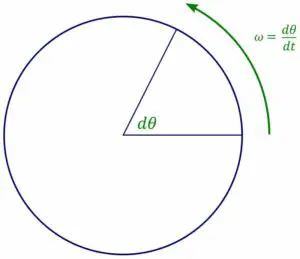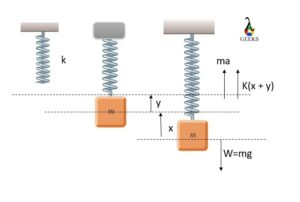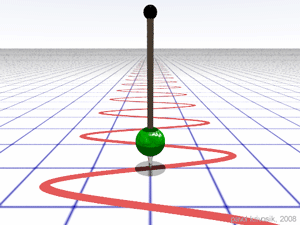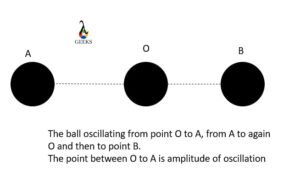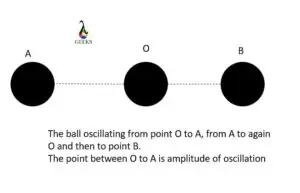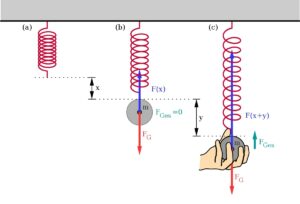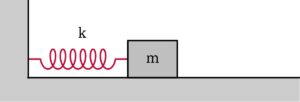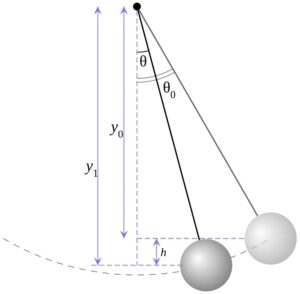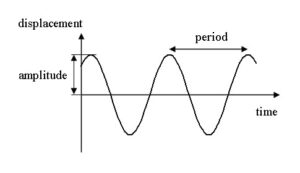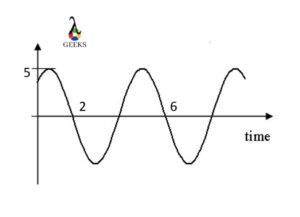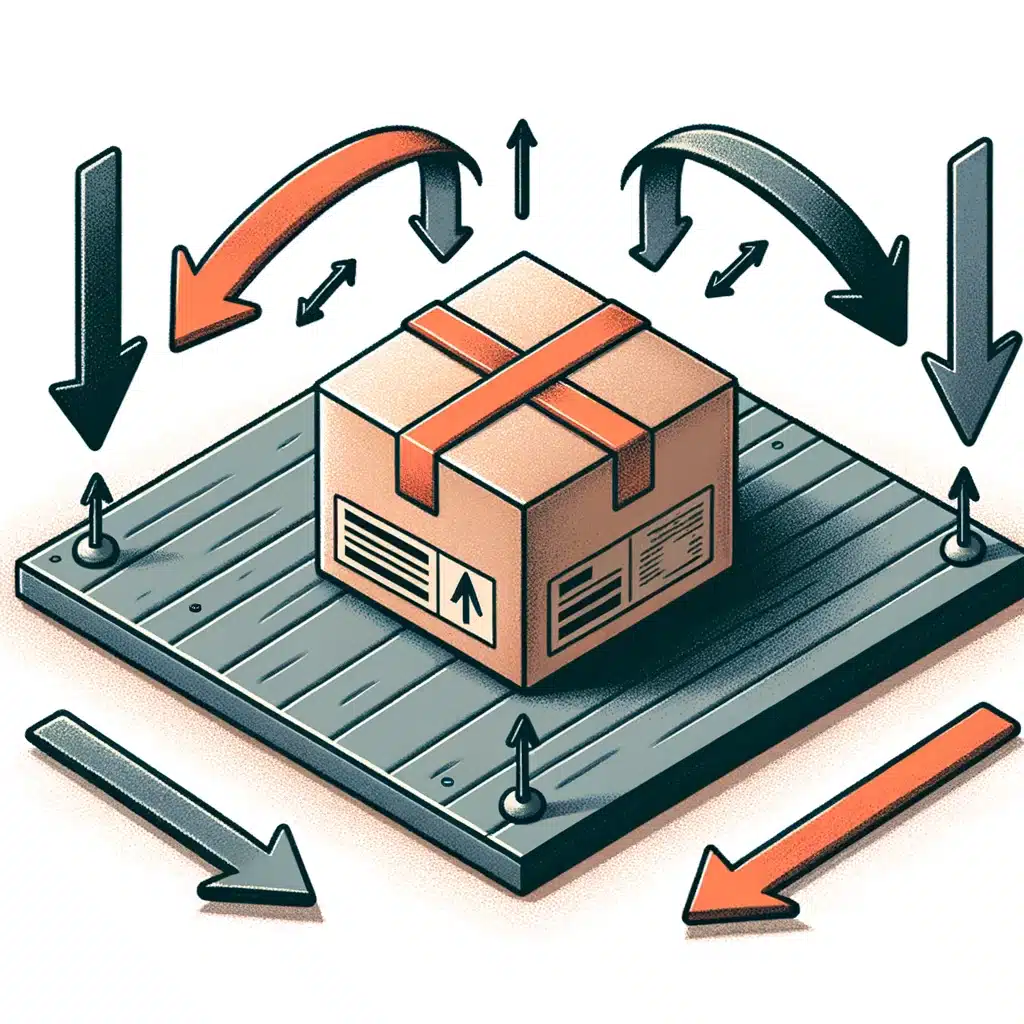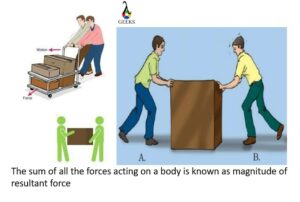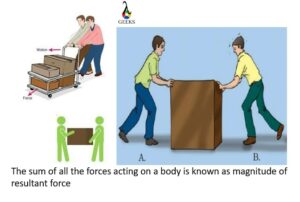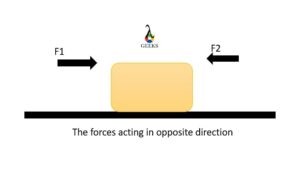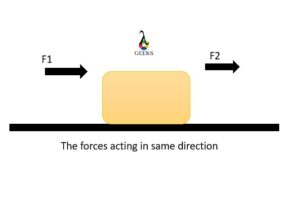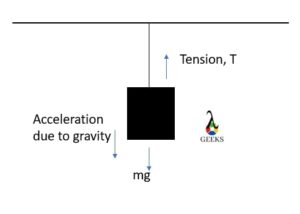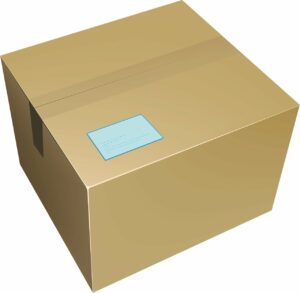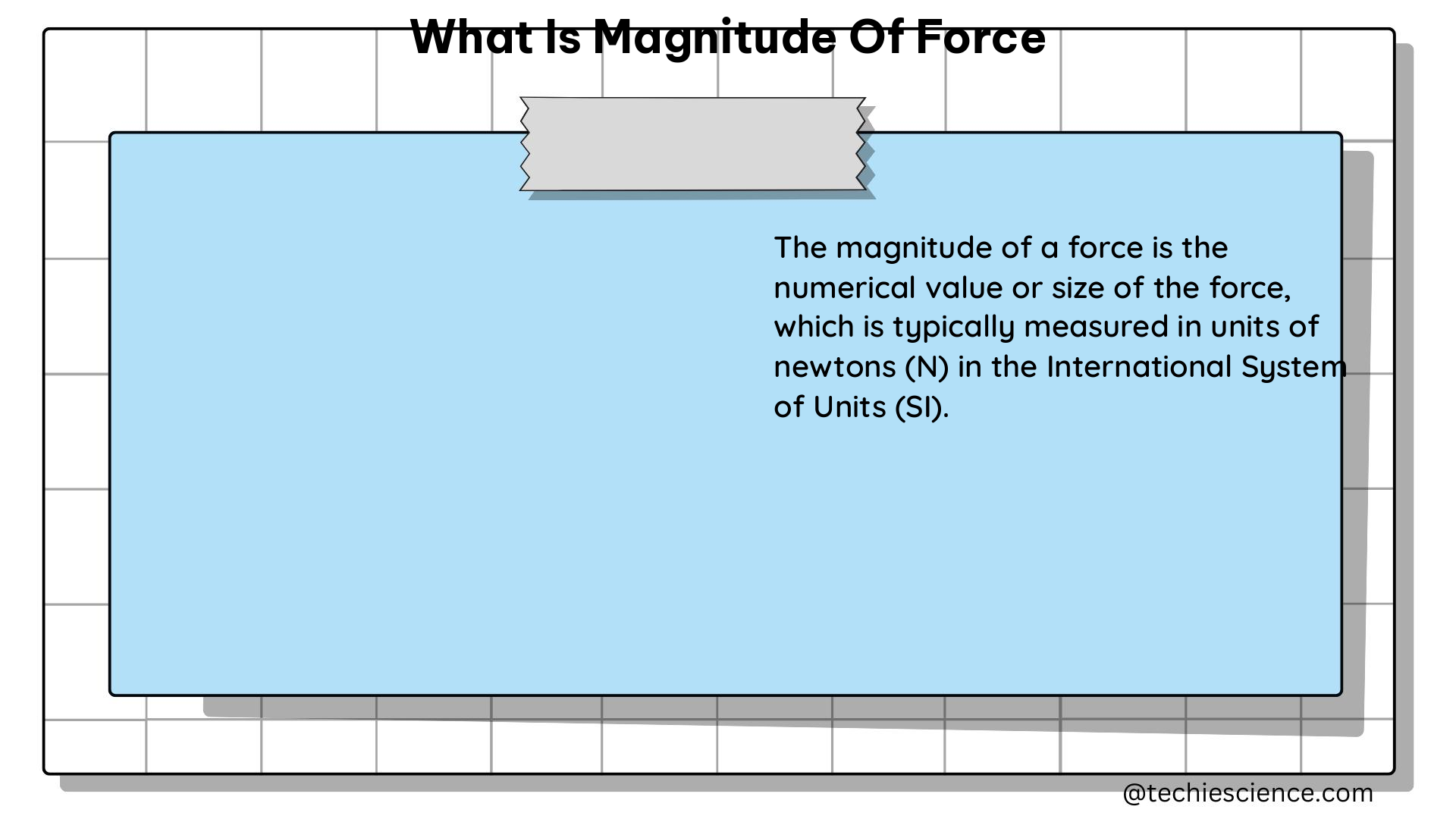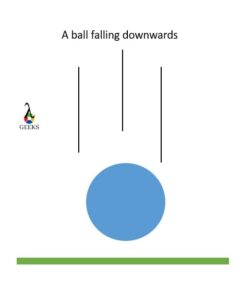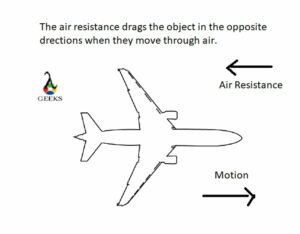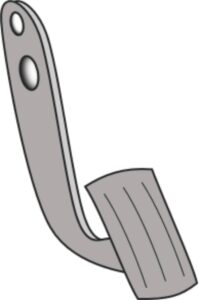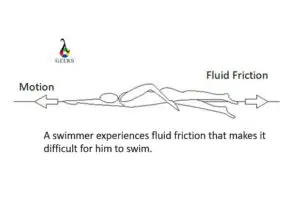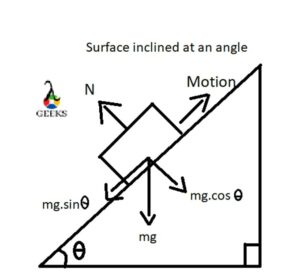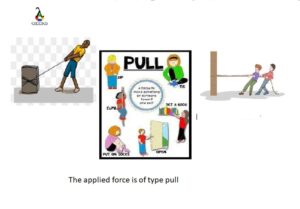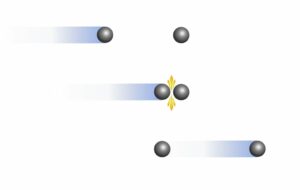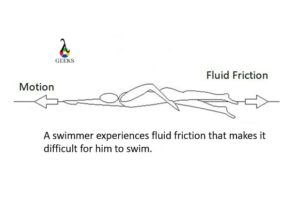Linear frequency is a fundamental concept in the field of signal processing and wave analysis. It plays a crucial role in understanding periodic motion and its relationship to simple harmonic motion. In this section, we will delve into the definition and explanation of periodic motion, as well as explore the connection between simple harmonic motion and periodic motion.
Definition and Explanation of Periodic Motion
Periodic motion refers to any motion that repeats itself after a certain interval of time. It is characterized by a regular pattern and can be observed in various natural phenomena, such as the swinging of a pendulum, the oscillation of a spring, or the rotation of celestial bodies.
One key aspect of periodic motion is its frequency, which represents the number of complete cycles or oscillations that occur in a given time period. Frequency is typically measured in hertz (Hz), where 1 Hz corresponds to one cycle per second. The linear frequency of a periodic motion refers to the frequency at which the motion occurs in a linear fashion, without any deviation or nonlinearity.
Linear frequency is essential in analyzing and understanding the behavior of periodic systems. By studying the linear frequency of a system, we can gain insights into its dynamics, stability, and response characteristics.
Relationship between Simple Harmonic Motion and Periodic Motion
Simple harmonic motion (SHM) is a special type of periodic motion that follows a sinusoidal pattern. It occurs when a restoring force is proportional to the displacement from an equilibrium position. Examples of simple harmonic motion include the back-and-forth motion of a mass-spring system or the oscillation of a pendulum.
The relationship between simple harmonic motion and periodic motion lies in the fact that simple harmonic motion is a specific form of periodic motion. While all simple harmonic motion is periodic, not all periodic motion is necessarily simple harmonic.
In simple harmonic motion, the linear frequency is directly related to the physical properties of the system, such as the mass and spring constant in a mass-spring system or the length and gravitational acceleration in a pendulum. The linear frequency determines the rate at which the system oscillates and is independent of the amplitude of the motion.
Understanding the relationship between simple harmonic motion and periodic motion allows us to analyze and predict the behavior of various systems in fields such as physics, engineering, and even music.
To summarize, linear frequency is a fundamental concept in the study of periodic motion. By examining the linear frequency of a system, we can gain valuable insights into its behavior and response characteristics. Additionally, understanding the relationship between simple harmonic motion and periodic motion helps us analyze and predict the dynamics of various systems. In the following sections, we will explore different aspects of linear frequency and its applications in more detail.
Linear Frequency and its Calculation
Definition of Linear Frequency
Linear frequency refers to the rate at which a wave oscillates or repeats in a linear fashion. It is a fundamental concept in physics and engineering, particularly in the study of waves and vibrations. The linear frequency of a wave is measured in hertz (Hz) and represents the number of complete cycles or oscillations that occur in one second.
Linear frequency can be understood as the inverse of the time period of a wave. It provides information about the speed at which the wave is oscillating or vibrating. The higher the linear frequency, the faster the wave is oscillating, and vice versa.
Calculation of Linear Frequency using Time Period
The linear frequency of a wave can be calculated using its time period. The time period of a wave is the time it takes for one complete cycle or oscillation to occur. It is denoted by the symbol T and is measured in seconds (s).
To calculate the linear frequency using the time period, we can use the formula:
Linear Frequency (f) = 1 / Time Period (T)
For example, if a wave has a time period of 0.02 seconds, we can calculate its linear frequency as:
Linear Frequency (f) = 1 / 0.02 = 50 Hz
This means that the wave completes 50 cycles or oscillations in one second.
Calculation of Linear Frequency using Wave Equation
Another way to calculate the linear frequency of a wave is by using the wave equation. The wave equation relates the linear frequency, wavelength, and the speed of the wave. It is given by the formula:
Linear Frequency (f) = Speed of the Wave (v) / Wavelength (λ)
The speed of the wave represents how fast the wave is propagating through a medium and is measured in meters per second (m/s). The wavelength of a wave is the distance between two consecutive points in a wave that are in phase with each other and is measured in meters (m).
By knowing the speed of the wave and the wavelength, we can calculate the linear frequency using the wave equation.
Relation between Linear Frequency and Angular Frequency
Linear frequency and angular frequency are two related concepts in wave analysis. Angular frequency, denoted by the symbol ω (omega), represents the rate at which the phase of a wave changes. It is measured in radians per second (rad/s).
The relationship between linear frequency (f) and angular frequency (ω) is given by the formula:
Angular Frequency (ω) = 2π × Linear Frequency (f)
Here, 2π represents a full cycle or 360 degrees in radians. By multiplying the linear frequency by 2π, we can obtain the angular frequency of a wave.
Units and Symbol of Linear Frequency
Linear frequency is a fundamental concept in the field of signal processing and engineering. It refers to the rate at which a signal or waveform repeats itself in a linear manner. In this section, we will discuss the units used to measure linear frequency and the symbols commonly employed to represent it.
Units of Linear Frequency
The most commonly used unit to measure linear frequency is the Hertz (Hz). One Hertz represents one cycle per second. It is named after Heinrich Hertz, a German physicist who made significant contributions to the study of electromagnetic waves.
Another unit that is sometimes used to express linear frequency is revolutions per minute (RPM). This unit is commonly used in the context of rotating machinery, such as engines or motors. It represents the number of complete rotations that occur in one minute.
To better understand the relationship between Hertz and RPM, consider a rotating object that completes one full revolution every second. In this case, the linear frequency would be 1 Hz or 60 RPM, as there are 60 seconds in a minute.
Symbol Used to Represent Linear Frequency
In mathematical equations and scientific notations, linear frequency is typically represented by the symbol “f” or the Greek letter “ν” (nu). The symbol “f” is derived from the word “frequency” and is widely used in various scientific disciplines.
The Greek letter “ν” is often used as an alternative symbol for linear frequency. It is derived from the Greek word “νεῦμα” (neuma), which means “nod” or “vibration.” The use of this symbol adds a touch of elegance and mathematical convention to the representation of linear frequency.
Both “f” and “ν” are widely recognized and accepted symbols for linear frequency in scientific literature and engineering applications. They are used interchangeably depending on the preference of the author or the field of study.
To summarize, linear frequency is measured in Hertz (Hz) or revolutions per minute (RPM). The symbol “f” or the Greek letter “ν” is used to represent linear frequency in mathematical equations and scientific notations. Understanding these units and symbols is essential for comprehending and working with linear frequency in various applications.
Angular Frequency vs Linear Frequency
Explanation of Angular Frequency and Linear Frequency
When discussing the concept of frequency, it is important to understand the difference between angular frequency and linear frequency. While both terms are related to the measurement of cycles or oscillations per unit of time, they are used in different contexts and have distinct meanings.
Angular Frequency:
Angular frequency, denoted by the symbol ω (omega), is a measure of how quickly an object or system rotates or oscillates. It is expressed in radians per second (rad/s). Angular frequency is commonly used in physics and engineering to describe the rate of change of angular displacement over time.
To better understand angular frequency, let’s consider an example. Imagine a wheel rotating at a constant speed. The angular frequency would represent how fast the wheel is turning, measured in radians per second. A higher angular frequency would indicate a faster rotation, while a lower angular frequency would correspond to a slower rotation.
Linear Frequency:
On the other hand, linear frequency, often simply referred to as frequency, is a measure of how many cycles or oscillations occur in a given unit of time. It is commonly denoted by the symbol f and expressed in hertz (Hz). Linear frequency is widely used in various fields, including physics, electronics, and telecommunications.
To illustrate linear frequency, let’s consider a simple example. Imagine a pendulum swinging back and forth. The linear frequency would represent how many complete swings the pendulum makes in one second. A higher linear frequency would indicate a faster oscillation, while a lower linear frequency would correspond to a slower oscillation.
Relationship between Angular Frequency and Linear Frequency
Although angular frequency and linear frequency have different units of measurement, they are closely related. In fact, there is a direct mathematical relationship between the two.
The relationship between angular frequency (ω) and linear frequency (f) can be expressed using the formula:
ω = 2πf
Here, π (pi) is a mathematical constant approximately equal to 3.14159. By multiplying the linear frequency by 2π, we can obtain the corresponding angular frequency.
This relationship allows us to convert between angular frequency and linear frequency. For example, if we know the linear frequency of a signal, we can easily calculate its angular frequency using the formula mentioned above.
Comparison of Symbols and Units Used for Angular Frequency and Linear Frequency
Angular frequency and linear frequency are represented by different symbols and units. Understanding these symbols and units is essential for correctly interpreting and working with frequency-related measurements.
Here is a comparison of the symbols and units used for angular frequency and linear frequency:
| Angular Frequency | Linear Frequency | |
|---|---|---|
| Symbol | ω (omega) | f |
| Unit | radians per second (rad/s) | hertz (Hz) |
As shown in the table, angular frequency is represented by the symbol ω (omega) and measured in radians per second (rad/s). On the other hand, linear frequency is denoted by the symbol f and expressed in hertz (Hz).
It is important to note that while angular frequency and linear frequency have different symbols and units, they are both fundamental concepts in the study of oscillations and waves. Understanding their relationship and how to convert between them is crucial in various scientific and engineering applications.
Finding Linear Frequency
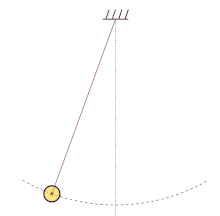
Formulas for calculating linear frequency
When it comes to understanding linear frequency, there are a few formulas that can help us calculate it. Linear frequency refers to the rate at which a signal oscillates or repeats over time. It is an essential concept in various fields, including physics, engineering, and signal processing.
One of the most common formulas used to calculate linear frequency is:
f = 1 / T
In this formula, f represents the linear frequency, and T represents the period of the signal. The period is the time it takes for one complete cycle of the signal to occur. By taking the reciprocal of the period, we can determine the linear frequency of the signal.
Another formula that is often used is:
f = n / t
Here, f represents the linear frequency, n represents the number of cycles that occur in a given time period t. This formula allows us to calculate the linear frequency based on the number of cycles that occur within a specific time frame.
Examples of calculating linear frequency for different scenarios
Let’s explore a few examples to better understand how to calculate linear frequency in different scenarios.
Example 1: Simple Harmonic Motion
Consider a simple harmonic motion, such as a mass attached to a spring oscillating back and forth. If the period of this motion is 2 seconds, we can use the formula f = 1 / T to calculate the linear frequency:
f = 1 / 2
f = 0.5 Hz
Therefore, the linear frequency of this simple harmonic motion is 0.5 Hz.
Example 2: Sound Waves
In the context of sound waves, the linear frequency represents the pitch of the sound. Suppose we have a sound wave with a period of 0.01 seconds. Using the formula f = 1 / T, we can calculate the linear frequency:
f = 1 / 0.01
f = 100 Hz
Hence, the linear frequency of this sound wave is 100 Hz.
Example 3: Electrical Signals
Electrical signals also have linear frequencies that can be calculated using the formulas mentioned earlier. Let’s say we have an electrical signal with a period of 0.005 seconds and it completes 10 cycles within that time frame. Using the formula f = n / t, we can determine the linear frequency:
f = 10 / 0.005
f = 2000 Hz
Therefore, the linear frequency of this electrical signal is 2000 Hz.
By applying these formulas, we can calculate the linear frequency for various scenarios, whether it’s simple harmonic motion, sound waves, or electrical signals. Understanding linear frequency allows us to analyze and manipulate signals in different domains, such as audio processing, telecommunications, and radar systems.
Importance of Frequency
Explanation of the Significance of Frequency in Physics
Frequency is a fundamental concept in physics that plays a crucial role in understanding various phenomena. It refers to the number of cycles or oscillations of a wave that occur in a given time period. Whether we are talking about sound waves, light waves, or electrical signals, frequency is a key parameter that helps us analyze and comprehend these phenomena.
In physics, frequency is measured in hertz (Hz), which represents the number of cycles per second. The higher the frequency, the more cycles occur within a given time frame. Conversely, a lower frequency means fewer cycles occur in the same time period.
Frequency is significant in physics for several reasons. Firstly, it helps us determine the pitch of sound waves. For example, a high-frequency sound wave corresponds to a high-pitched sound, while a low-frequency sound wave corresponds to a low-pitched sound. This relationship between frequency and pitch is crucial in music, as different frequencies produce different musical notes.
Secondly, frequency is essential in analyzing and understanding wave phenomena. Waves, such as water waves, electromagnetic waves, and seismic waves, all exhibit characteristic frequencies. By studying the frequency of these waves, scientists can gain insights into their behavior, propagation, and interaction with the surrounding environment.
Lastly, frequency is vital in the field of electronics and electrical engineering. In alternating current (AC) circuits, the frequency of the electrical signal determines the rate at which the current alternates direction. This is particularly important in power distribution systems, where a consistent frequency is necessary for efficient transmission and operation of electrical devices.
Applications of Frequency in Various Phenomena
Frequency finds applications in a wide range of phenomena, including oscillation, waves, light, current, and voltage. Let’s explore some of these applications:
-
Oscillation: Frequency is central to the study of oscillatory motion. Whether it’s the swinging of a pendulum, the vibrations of a guitar string, or the motion of a simple harmonic oscillator, the frequency determines the rate at which the system oscillates. In simple terms, it determines how fast or slow an object vibrates back and forth.
-
Waves: Frequency is a fundamental property of waves. It determines the number of wave cycles that pass through a given point in a unit of time. For example, in the case of water waves, the frequency determines the number of wave crests that pass a fixed point in a second. In electromagnetic waves, such as radio waves, microwaves, and visible light, frequency determines the energy and wavelength of the wave.
-
Light: In the context of light, frequency determines its color. Different colors of light correspond to different frequencies. For instance, red light has a lower frequency than blue light. This relationship between frequency and color is essential in fields like optics, photography, and display technologies.
-
Current and Voltage: In electrical circuits, frequency plays a crucial role in determining the behavior of current and voltage. For example, in alternating current (AC) circuits, the frequency of the electrical signal determines the rate at which the current alternates direction. This is important in the design and operation of electrical devices, such as motors, generators, and transformers.
Understanding the importance of frequency in these various phenomena allows scientists, engineers, and researchers to manipulate and control these phenomena for practical applications. By manipulating the frequency, we can achieve desired outcomes, such as amplification, filtering, or modulation of signals.
Linear Frequency Modulation
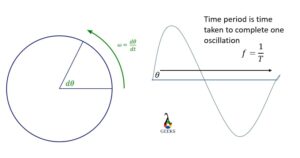
Linear frequency modulation, also known as linear FM, is a modulation technique commonly used in various applications such as radar and pulse compression. It involves a continuous change in frequency over time, resulting in a linear relationship between the frequency and time. This section will provide a definition and explanation of linear frequency modulation, as well as explore its applications in radar and pulse compression.
Definition and Explanation of Linear Frequency Modulation
Linear frequency modulation is a method of modulating a carrier signal by varying its frequency in a linear manner. In this technique, the frequency of the carrier signal increases or decreases at a constant rate over time. The rate at which the frequency changes is known as the sweep rate or modulation rate.
One of the key characteristics of linear frequency modulation is that the frequency change is proportional to the time elapsed. This means that the frequency increases or decreases linearly with time. This linear relationship between frequency and time allows for precise control and manipulation of the carrier signal.
Linear frequency modulation is often used in various applications that require the transmission and reception of signals with specific frequency characteristics. It is particularly useful in radar systems and pulse compression techniques.
Applications of Linear Frequency Modulation in Radar and Pulse Compression
Radar systems utilize linear frequency modulation to accurately measure the distance and velocity of objects. By transmitting a signal with a linearly increasing or decreasing frequency, the radar system can calculate the time it takes for the signal to travel to the target and back. This information is then used to determine the distance to the target.
In pulse compression techniques, linear frequency modulation is employed to improve the resolution and range of radar systems. By using a linear frequency modulated signal, the radar system can achieve a compressed pulse with a longer duration. This extended pulse duration allows for better range resolution, enabling the detection of smaller targets and improved accuracy.
Linear frequency modulation is also utilized in sonar systems for underwater communication and object detection. By modulating the frequency of the sonar signal in a linear manner, it is possible to accurately measure the distance to underwater objects and detect their presence.
Frequency Separation in Photoshop
Frequency separation is a powerful technique used in image editing to separate the high-frequency details from the low-frequency tones in an image. This technique allows for precise control and manipulation of different aspects of an image, such as texture and color, without affecting the overall composition. In this section, we will explore the concept of frequency separation in Photoshop and discuss its importance and applications in image editing.
Explanation of Frequency Separation in Photoshop
Frequency separation works by decomposing an image into two separate layers: the high-frequency layer and the low-frequency layer. The high-frequency layer contains the fine details of the image, such as wrinkles, pores, and texture, while the low-frequency layer contains the broader tonal information, such as color transitions and gradients.
To create a frequency separation in Photoshop, follow these steps:
- Open the image you want to edit in Photoshop.
- Duplicate the image layer twice.
- Rename the first duplicate layer as “High Frequency” and the second duplicate layer as “Low Frequency.”
- Apply a high-pass filter to the “High Frequency” layer. This filter helps to enhance the details by removing the low-frequency information. Adjust the radius of the filter to control the level of detail.
- Apply a Gaussian blur filter to the “Low Frequency” layer. This filter helps to smooth out the image and preserve the overall tonal information. Adjust the radius of the filter to control the level of smoothness.
- Set the blending mode of the “High Frequency” layer to “Linear Light.” This blending mode allows the layer to interact with the layers below it while preserving the details.
- Now, you can make adjustments to each layer separately. For example, you can use the healing brush tool on the “High Frequency” layer to remove blemishes and imperfections without affecting the overall color and tone of the image. On the other hand, you can adjust the brightness, contrast, and color balance on the “Low Frequency” layer to enhance the overall look of the image.
Importance and Application of Frequency Separation in Image Editing
Frequency separation is a valuable technique in image editing because it provides a non-destructive way to retouch and enhance images. By separating the high-frequency details from the low-frequency tones, photographers and retouchers can have more control over the editing process, resulting in more natural and realistic-looking images.
Here are some important applications of frequency separation in image editing:
-
Skin Retouching: Frequency separation is widely used in portrait retouching to smooth out skin imperfections while preserving the texture. By working on the high-frequency layer, retouchers can remove blemishes, wrinkles, and other skin flaws without affecting the overall skin tone and color.
-
Texture Enhancement: Frequency separation allows photographers to enhance the texture in their images. By selectively sharpening the high-frequency layer, they can bring out the fine details and make the image more visually appealing.
-
Color Correction: With frequency separation, it is possible to adjust the color and tone of an image without affecting the texture. By working on the low-frequency layer, photographers can make global color corrections, such as adjusting the white balance, saturation, and contrast, while leaving the fine details intact.
-
Object Removal: Frequency separation can be used to remove unwanted objects from an image seamlessly. By cloning or healing on the high-frequency layer, retouchers can remove distractions without leaving any visible traces.
Linear Frequency Modulation Waveform Synthesis
Explanation of Waveform Synthesis using Linear Frequency Modulation
Waveform synthesis using linear frequency modulation (LFM) is a technique that involves varying the frequency of a signal in a linear manner over time. This modulation technique is widely used in various applications, including radar, sonar, telecommunications, and music synthesis.
In LFM, the frequency of the signal increases or decreases linearly with time. This results in a continuous and smooth change in the pitch or frequency of the waveform. The rate at which the frequency changes is known as the sweep rate or chirp rate. By controlling the sweep rate, we can shape the characteristics of the synthesized waveform.
One common way to generate an LFM waveform is by using a voltage-controlled oscillator (VCO). The VCO produces a signal with a frequency that is directly proportional to the input voltage. By applying a linearly increasing or decreasing voltage to the VCO, we can achieve the desired linear frequency modulation.
Another method for LFM waveform synthesis is through digital signal processing techniques. By manipulating the digital representation of the waveform, we can achieve precise control over the frequency modulation. This approach is commonly used in software-based synthesizers and digital communication systems.
Applications and Benefits of Linear Frequency Modulation in Waveform Synthesis
Linear frequency modulation has a wide range of applications in various fields. Let’s explore some of the key applications and the benefits it offers:
-
Radar Systems: LFM is extensively used in radar systems for target detection and ranging. By transmitting LFM waveforms and analyzing the received signals, radar systems can accurately measure the distance to objects and detect their velocity. The linear frequency modulation allows for better resolution and range accuracy in radar systems.
-
Sonar Systems: Similar to radar, sonar systems also utilize LFM waveforms for underwater target detection and ranging. By emitting LFM signals and analyzing the echoes, sonar systems can determine the distance and location of underwater objects. The linear frequency modulation helps in distinguishing between different targets and reducing interference from reflections.
-
Telecommunications: LFM is employed in various telecommunications applications, such as frequency-modulated continuous wave (FMCW) radar and spread spectrum communication systems. In FMCW radar, LFM waveforms are used to measure the range and velocity of targets. Spread spectrum communication systems utilize LFM waveforms to achieve robust and secure communication by spreading the signal energy across a wide frequency band.
-
Music Synthesis: LFM is widely used in electronic music synthesis to create unique and evolving sounds. By modulating the frequency of oscillators with LFM waveforms, musicians can generate complex and dynamic timbres. The linear frequency modulation adds movement and expressiveness to the synthesized sounds, allowing for rich and evolving musical compositions.
-
Medical Imaging: LFM waveforms find applications in medical imaging techniques, such as ultrasound and magnetic resonance imaging (MRI). In ultrasound imaging, LFM signals are used to generate focused beams and improve the resolution of the images. In MRI, LFM waveforms are employed to encode spatial information and reconstruct detailed images of the body.
The benefits of using linear frequency modulation in waveform synthesis include improved resolution, enhanced range accuracy, better target detection, reduced interference, and the ability to create dynamic and evolving sounds. These advantages make LFM a versatile and powerful technique in various fields.
Linear Frequency Response
Definition and Explanation of Linear Frequency Response
In signal processing, the concept of linear frequency response plays a crucial role. It refers to the behavior of a system or device when subjected to different frequencies of input signals. A linear frequency response means that the system or device responds uniformly to all frequencies within its operating range.
When we talk about linear frequency response, we are essentially looking at how a system or device handles different frequencies without distorting the input signal. In simpler terms, it means that the output of the system or device is a faithful reproduction of the input signal, with no alterations in amplitude or phase.
To understand this concept better, let’s consider an example. Imagine you have a speaker system that claims to have a linear frequency response from 20 Hz to 20 kHz. This means that when you feed the speaker system with a sine wave at 50 Hz, it will produce an output that accurately represents the input signal. Similarly, if you input a sine wave at 10 kHz, the speaker system will faithfully reproduce that frequency as well.
Importance and Applications of Linear Frequency Response in Signal Processing
The concept of linear frequency response is of utmost importance in various fields of signal processing. Let’s explore some of its applications:
-
Audio Equipment: In the realm of audio, linear frequency response is crucial for high-fidelity reproduction of sound. Audio systems such as speakers, headphones, and amplifiers strive to achieve a linear frequency response to ensure accurate playback of music and other audio content. This ensures that the listener hears the audio as intended by the artist or sound engineer.
-
Telecommunications: Linear frequency response is vital in telecommunications systems, including telephones, cell phones, and VoIP (Voice over Internet Protocol) devices. These systems rely on accurate transmission and reception of audio signals, and a linear frequency response ensures that the transmitted voice signals are faithfully reproduced at the receiving end.
-
Equalization: Equalization is a technique used to adjust the frequency response of audio systems to compensate for deficiencies in the system or to achieve a desired sound. Linear frequency response is essential in equalization to ensure that the adjustments made to the frequency spectrum do not introduce distortion or alter the original sound beyond the intended modifications.
-
Instrumentation: Linear frequency response is crucial in various scientific and engineering instruments. For example, oscilloscopes, spectrum analyzers, and data acquisition systems need to accurately measure and display signals across a wide range of frequencies. A linear frequency response ensures that the measurements and analysis performed by these instruments are reliable and accurate.
Linear Frequency Modulation Chirp
Definition and Explanation of Linear Frequency Modulation Chirp
Linear Frequency Modulation Chirp is a technique used in various fields, such as radar, sonar, telecommunications, and audio synthesis. It involves the modulation of a signal’s frequency in a linear manner over time. This modulation creates a distinctive sound or waveform known as a chirp.
A chirp is characterized by a continuous change in frequency over a specified time period. Unlike a simple tone, which has a constant frequency, a chirp sweeps through a range of frequencies, either increasing or decreasing linearly. This linear frequency modulation allows for a wide range of applications and benefits.
One of the key aspects of linear frequency modulation chirp is the linear relationship between the frequency and time. As time progresses, the frequency of the chirp changes at a consistent rate. This linear relationship makes it easier to analyze and process the chirp signal.
Applications and Benefits of Linear Frequency Modulation Chirp
Linear frequency modulation chirp finds applications in various fields due to its unique properties and benefits. Let’s explore some of the key applications and advantages of this technique:
-
Radar and Sonar Systems: Linear frequency modulation chirp is widely used in radar and sonar systems for target detection and ranging. By transmitting a chirp signal and analyzing the received echo, these systems can accurately determine the distance, velocity, and direction of objects. The linear frequency modulation allows for precise measurements and improved target detection in noisy environments.
-
Telecommunications: In telecommunications, linear frequency modulation chirp is used for channel estimation and equalization. By transmitting chirp signals through a communication channel, the system can analyze the received signal to estimate the channel‘s frequency response. This information is crucial for equalizing the channel and improving the overall communication quality.
-
Audio Synthesis: Linear frequency modulation chirp is also utilized in audio synthesis to create unique and dynamic sounds. By modulating the frequency of an oscillator in a linear manner, composers and sound designers can generate interesting and evolving timbres. This technique is commonly used in electronic music and sound effects production.
-
Medical Imaging: Linear frequency modulation chirp is employed in medical imaging techniques such as ultrasound and magnetic resonance imaging (MRI). In ultrasound imaging, chirp signals are used to generate focused beams and improve image resolution. In MRI, chirp pulses are utilized for spatial encoding and signal acquisition.
-
Geophysical Exploration: Linear frequency modulation chirp is used in geophysical exploration, particularly in seismic surveys. By transmitting chirp signals into the ground and analyzing the reflected waves, geophysicists can gather information about subsurface structures and geological formations. The linear frequency modulation allows for better resolution and depth penetration.
-
Non-Destructive Testing: Linear frequency modulation chirp is applied in non-destructive testing (NDT) methods like ultrasonic testing. By transmitting chirp signals into materials and analyzing the reflected waves, defects and anomalies can be detected. The linear frequency modulation helps in distinguishing between different types of reflections and improving the accuracy of defect identification.
Linear Frequency Calculator
A linear frequency calculator is a useful tool that helps in determining the frequency of a signal or waveform. It is particularly helpful in fields such as electronics, telecommunications, and audio engineering. Understanding the concept of linear frequency is essential to comprehend how this calculator works.
Linear frequency refers to a frequency scale that increases or decreases in a linear manner. In other words, the frequency values are evenly spaced apart. This is in contrast to logarithmic frequency scales, where the spacing between values increases exponentially. The linear frequency scale is commonly used in applications where a linear relationship between frequency and some other parameter is desired.
Explanation of How to Use a Linear Frequency Calculator
Using a linear frequency calculator is straightforward and requires only a few simple steps. Let’s walk through the process:
-
Input the Start and End Frequencies: The first step is to input the start and end frequencies of the desired range. These frequencies define the span over which the linear frequency calculator will operate. For example, if you want to analyze frequencies from 100 Hz to 10 kHz, you would enter these values accordingly.
-
Specify the Number of Steps: Next, you need to specify the number of steps or intervals you want the linear frequency calculator to divide the range into. This determines the resolution or granularity of the frequency values. A higher number of steps will result in a more detailed analysis but may require more computational resources.
-
Calculate the Step Size: The step size is calculated by dividing the difference between the end and start frequencies by the number of steps. This value represents the increment between each frequency value in the linear scale.
-
Generate the Frequency Values: Once the step size is determined, the linear frequency calculator generates the frequency values within the specified range. These values are evenly spaced apart and cover the entire span from the start to the end frequency.
-
Utilize the Frequency Values: The generated frequency values can now be used for various purposes, such as analyzing the frequency response of a system, designing filters, or generating test signals. The linear frequency scale allows for easy interpretation and comparison of different frequency components.
Using a linear frequency calculator simplifies the process of working with frequency values and enables efficient analysis and manipulation of signals. It eliminates the need for manual calculations and ensures accuracy in determining the frequency range of interest.
Frequently Asked Questions
Q1: What is linear frequency modulation?
A1: Linear frequency modulation is a technique where the frequency of a signal varies linearly with time.
Q2: How is linear frequency modulation synthesized?
A2: Linear frequency modulation synthesis is achieved by varying the frequency of a waveform in a linear manner over time.
Q3: What is linear frequency modulation radar?
A3: Linear frequency modulation radar is a radar system that uses linear frequency modulation to transmit and receive signals, allowing for accurate range and velocity measurements.
Q4: How does linear frequency modulation sonar work?
A4: Linear frequency modulation sonar uses linear frequency modulation to transmit and receive sound waves in water, enabling the detection and location of underwater objects.
Q5: What is the linear frequency modulation equation?
A5: The linear frequency modulation equation describes the relationship between the frequency of a signal and time, typically represented as f(t) = f0 + kt, where f0 is the initial frequency and k is the rate of change.
Q6: Why is frequency important?
A6: Frequency is important because it determines the pitch of a sound or the rate of occurrence of a repeating event, and it is a fundamental parameter in many fields such as communication, signal processing, and physics.
Q7: How does the linear frequency response change when frequency increases?
A7: The linear frequency response describes how a system or device responds to different frequencies. When frequency increases, the linear frequency response may change, resulting in variations in amplitude, phase, or other characteristics of the system’s output.
Q8: What is the ratio of angular frequency and linear frequency?
A8: The ratio of angular frequency (ω) to linear frequency (f) is given by the equation ω = 2πf, where 2π represents a full cycle or 360 degrees.
Q9: How can I calculate the linear frequency?
A9: The linear frequency can be calculated using the formula f = 1/T, where f is the frequency and T is the period of the waveform.
Q10: Why would I want to linearize data?
A10: Linearizing data is often done to simplify analysis or modeling. By transforming non-linear data into a linear form, it becomes easier to apply linear regression techniques or make linear approximations for further analysis.

